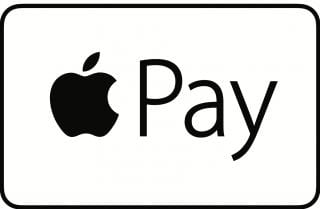It’s the end of the week, but that doesn’t mean an end to learning more about your favorite devices. Each week, the Friday Five takes a quick look at a Mac OS X or iOS app or tech subject to point out five things you may have overlooked before.
Today’s Friday Five is going to be a bit different – I often focus on a particular app or platform and give you the skinny on five things that you can do or may not have known before. Today we’re going to talk about digital photography and why you should consider taking photos in raw formats instead of as JPEGs.
First, a bit of background about raw image files. Just about every digital camera initially shoots images in a raw format (sometimes written as RAW), capturing information about light that comes through the lens and impinges on a sensor. However, the images are then processed by the digital camera into a file format that is compact and common — usually JPEG. If the only camera you use is the one on your iPhone or iPad, you can probably stop reading now since those devices won’t let you save photos in a raw format.
Raw images are sometimes called digital negatives because they’re analogous to the old film negatives that we used to get back with our prints — they’re not an image, but contain all of the information that is needed to make an image. Your camera saves the raw information in a format that’s proprietary to each camera manufacturer: Canon, for example, saves files in the .CR2 format, while Nikon uses .NRW or .NEF and Olympus .ORF. In most cases, cameras are preset to do a lot of processing and then save the files in the JPEG file format as a .JPG file.
What kind of processing occurs? There’s a lot going on behind the scenes. Your camera will remove defective pixels in a photo and interpolate data. It sets white balance, which accounts for the color temperature (tint) of the light that was used while taking the photograph. It reduces noise in the image, translates colors to a known color space, renders tones in a way that they’re more pleasing to the average human eye, and then it compresses the file down so that it can save more photos on your SD card. While it usually creates images that are nice to look at, that processing can degrade the photos somewhat and make it more difficult to make them look better in post-processing (using software to tweak the images).
Most recent DSLRs and many point-and-shoot cameras allow photographers to set their cameras to save images in raw formats, as .JPG files, or as both. Since the method of setting this up varies by manufacturer, I recommend that you look at your camera’s user manual to see how to do this for your own camera. Me? I save mine in both formats ![]() since my wife uses our photos to create slideshows, photo books and calendars, while I want the raw originals so I can tweak the images that I’m most proud of.
since my wife uses our photos to create slideshows, photo books and calendars, while I want the raw originals so I can tweak the images that I’m most proud of.
“If the only camera you use is the one on your iPhone or iPad, you can probably stop reading now since those devices won’t let you save photos in a raw format.”
So what are some good reasons why you should shoot raw images with your digital camera?
1.) You’ll get the highest level of image quality
Shooting in a raw format means that your camera saves all of the data from the camera sensor. The JPEG format records only 256 levels of brightness, for example, while raw formats can save between 4,096 and 16,384 levels. Have you ever taken a photo with a bright sky and noticed that there are “bands” of color in them? Those bands, caused by posterization, are less likely to happen when you shoot raw. If you post-process your raw images, you can make more manual adjustments to exposure, contrast, brightness, and so on because there’s more data to work with.
2.) It’s easier to correct overexposed or underexposed images and adjust white balance
Most of the time our digital cameras are set up to automatically get the best possible exposure, but sometimes the light metering is off and you’ll get an image that is underexposed (dark) or overexposed (bright) to the point that it looks bad. Rather than just wish that your photo didn’t look so dark or light, the extra information captured in the raw format makes it possible to correct the exposure manually without losing too much quality.
Likewise, if your camera doesn’t automatically adjust white balance properly, you can end up with images that have either an orangish or bluish tint to them if they’re shot under incandescent or fluorescent lighting. It’s much easier to adjust white balance when the software used for post-processing has more information to start with.
3.) Post-processing apps can sharpen or reduce noise in your images better than your camera can
Applications like Adobe Lightroom that run on your powerful Mac or PC use algorithms for sharpening your photos or reducing noise (the “graininess” found in photos taken in low light) that are much more powerful than those built into digital cameras. When you have an image that’s a real award-winner and you want to make those subtle changes to it to get rid of a little noise, Lightroom and those other apps are going to do a much better job than your camera can.
4.) Non-destructive editing
When you work with a RAW file and make adjustments to it, you don’t change the original image. Instead, you are making a set of instructions that tell your post-processing software how to save the file as a JPEG or TIFF. JPEG is what is known as a “lossy” file format, meaning that files lose quality each and every time you adjust and save them again. To keep from doing that, many photographers make duplicates of their original JPEG files, saving an unchanged copy for posterity.
5.) For pros or advanced amateur photographers, it’s the only way to go
Adobe Lightroom and Apple’s no-longer-supported Aperture are both set up to handle large batches of images — all the pictures taken at a wedding or on a field trip — in a fast, efficient workflow. They’re both able to handle those batches of raw images that are stored on your camera’s SD card. If you’re a professional photographer shooting events that only happen once — say weddings, sporting events, or rocket launches — you already know that shooting raw is going to give you the control you need to fix images that aren’t quite perfect.
Every silver lining has a cloud, however, and there are some drawbacks to shooting in raw format. Let’s quickly review those bad points…
1.) Post-processing
For photographers who take JPEG images with their cameras and then never do any tweaking, the idea that you’ll need to post-process those photos with an app like Lightroom isn’t a nice prospect. However, many photographers — even those who only use their iPhones to take pictures — are getting used to the idea of editing photos, adjusting tints and pulling details out of shadows. If you’re one of those people, then switching to raw images won’t be all that much of a change. In case you’re wondering, the standard Photos app that comes with OS X imports and stores those raw images from a large number of cameras. You won’t get a lot of the tweaking capability that you do with more professional apps, but you can still make changes to your images in Photos.
2.) Space requirements
Those raw images contain much more information that has not been run through a compression algorithm. As a result, they can be anywhere from two to six times the size of a standard JPEG file. That reduces the number of photos that can be stored on a memory card or on your computer. On the other hand, storage is getting much cheaper every year. If you need more storage, MacSales.com is always here to help you with that requirement!
3.) Raw formats are proprietary
While JPEG images are so prevalent that there’s a good chance you’ll always be able to open them up in some software, most camera manufacturers have their own raw format and you might not be sure that it will be supported by apps in the future. Fortunately, Adobe has created an open source raw format called DNG (digital negative), and those proprietary raw files can be converted to DNG format in no time at all. Some camera manufacturers are even starting to store photos on-camera in DNG, so hopefully we’ll see more of that in the future and DNG will become as prevalent as JPEG.
For anyone who has resolved to become a better photographer in 2016, setting that camera up to shoot raw images may be a good first step. Adobe’s Creative Cloud for Photography is inexpensive and offers you not only Adobe Lightroom and Photoshop, but a number of mobile apps to help your iPhone or iPad photography jump to the next level as well.









Great post..! Thanks for sharing , Really helpful, inspiring people to be proud of their own invention.
BTW, OWC you should have an edit ability for us to correct our comments.
On the last point DNG, support for DNG, and adobes ability to create DNG files is variable. So variable that sometimes you cannot open a DNG. I’ve also observed issues with red channel differences. That said, while the concern over raw proprietary formats is always discussed, the reality is I’ve never encounter an issue. This are largely variants on TIFF and are quickly reverse engineered. I shoot JPEG only, when I need a large number of shots (raw fills buffers faster), at the raw workflows are really not that big of deal and having greater dynamic ranges, white balance, … trumps any size savings.
Nicely done. Clear, simply presented, straightforward guidance anyone with a camera can use. Thanks.
As a retired Photojournalist and picture editor for a large mid west newspaper, I want to give a bit of a different prospective.
All 17 photographer I worked with shot in JPEG at the instruction of our employer. With a little creative discipline we produce good image. What I have heard and agree with, are professional photographic authorities point out that in a controlled setting say a studio, with the lighting adjusted – there is no need for shooting Raw.
When I find myself in the real world working under varied and many times bad conditions, then of course I use RAW
Since I am now starting to take digital photos to accompany articles I post online, in addition to personal digital “snapshots”, I found this article very interesting and informative. I may have to get a higher-capacity SD card for my DSLR, but I look forward to working with RAW images for my online work. This article is going into my archives!
Great article with a lot of useful information. Working in the print industry I see quite a few jpeg files over or under exposed. I work to explain the benefits of shooting in RAW, of course after the images have been shot is to late. I will hang on to this article to share with some of my clients in the future, thanks.